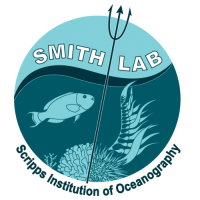Aloha! Our lab just got back from our annual field work trip to Maui, and we have a lot to report!
We’ve been visiting Maui for over a decade to monitor coral reefs along the island’s leeward (sheltered from the wind) coast. We return to the same sites year after year and take thousands of pictures of each reef. When we return to the lab, we can stitch these photos into a 3D model using a technology called Structure from Motion. These models allow us to visualize change on the reef over time: coral growth, storm damage, species turnover, and more.
As with previous trips, we were fortunate enough to work with the amazing crew at Ultimate Whale Watch and Snorkel, who expertly chartered us to 15+ sites off the coast. We were also able to work with the Hawaii Division of Aquatic Resources (DAR) to provide hands-on training in Structure from Motion monitoring methods. After surveying a mock “coral reef” at Kahekili Beach Park, divers got to practice using the cameras to survey the reef at Kahekili, and got the hang of it quickly.
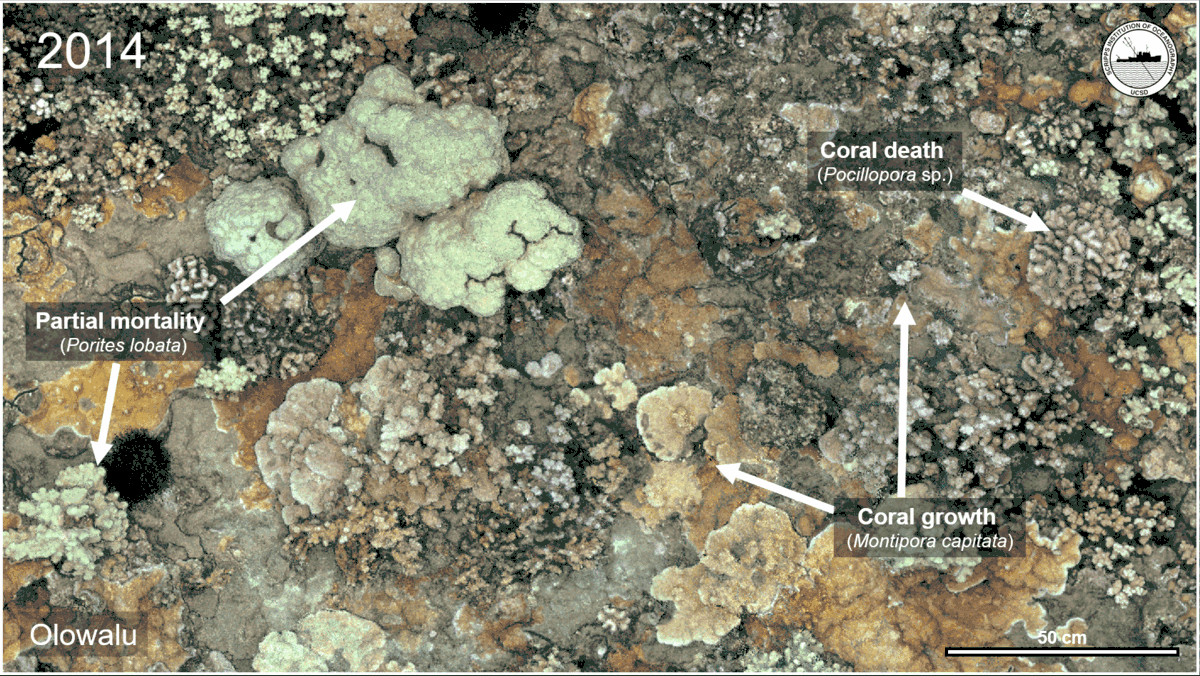
A timeseries of reef change from our site at Olowalu.
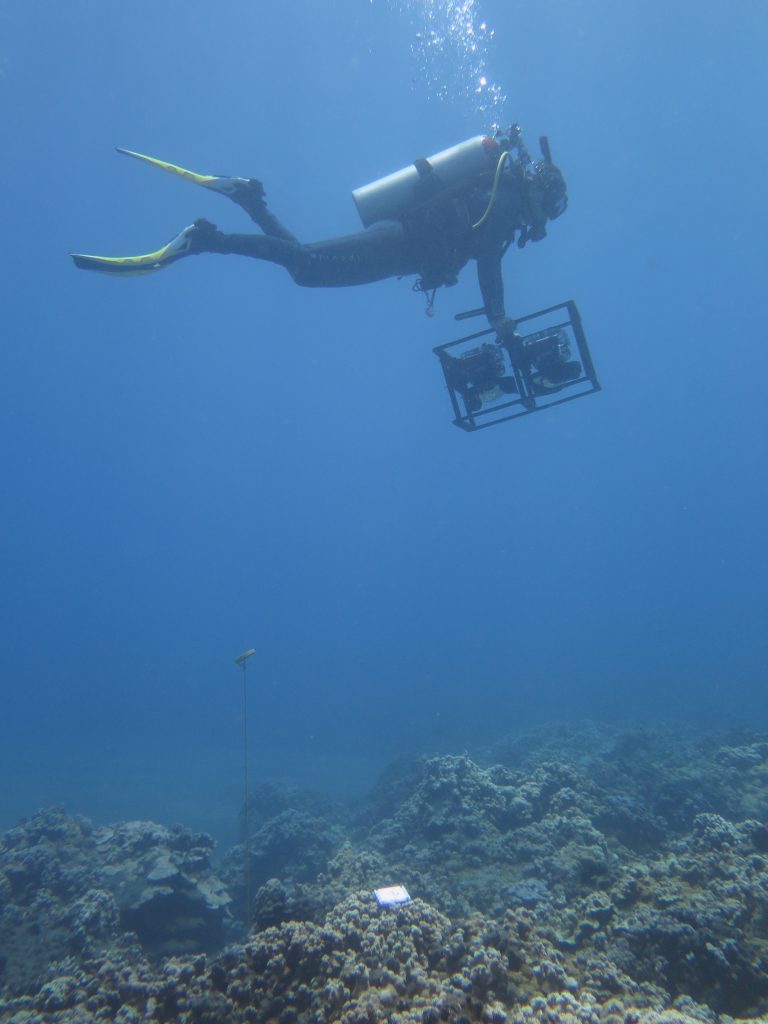
Smith Lab PhD student Sarah Romero swims over the reef with an underwater camera rig.
In addition to photographing the reef, we also collected tissue samples from branching Porites corals at three of our long-term monitoring sites. These corals form dense thickets that can stretch as far as the eye can see. We don’t currently know if these thickets are made up of multiple individuals or if they constitute a single coral colony that spread via fragmentation. Our samples, paired with the 3D reef models, will allow us to determine the amount of genetic variability within these coral thickets and better understand what constitutes an “individual” coral.
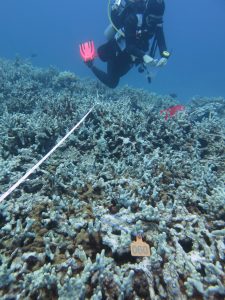
Smith Lab manager Sam Clements holds a syringe containing coral tissue.

Anna Rothstein probes a reef crevice using a GoPro.
This year, our team from Scripps was joined by collaborators from San Jose State University (Anna Rothstein, of Scripps alumna Dr. Maya deVries’ lab) and the Monterey Bay Aquarium Research Institute (Scripps alumnus Dr. Yui Takeshita). With a GoPro and selfie-stick in hand, Anna probed the cracks and crevices in the reef, spooking a few fish and moray eels in the process. Her research focuses on comparing the abundance of different coral and algae species between the exposed reef and the more sheltered reef crevices. She will use her GoPro footage from this trip to help answer that question. While Anna focused on reef crevices, Yui’s work focused on deploying the Benthic Ecosystem and Acidification Measurement System (BEAMS), an instrument that measures the rate of reef metabolism, to quantify short term changes in temperature, pH, and salinity at our monitoring site at Kahekili.
Overall, the reefs looked healthy, with little noticeable change from our last monitoring trip in 2021. Maui’s reefs are currently recovering from sequential marine heat waves that caused coral bleaching in 2015 and 2019. We saw very little bleaching on this trip, and saw promising signs of coral regrowth since 2019. We unfortunately did see high densities of crown of thorns starfish (COTS for short) at several of our sites, including inside the marine protected area at Molokini crater. COTS are voracious coral predators, and while they exist naturally on reefs at low levels, they can cause severe declines in coral cover at high densities. The uptick in COTS that we noticed should be monitored going forward to determine what factors might be driving the apparent increase in COTS abundance at our sites.
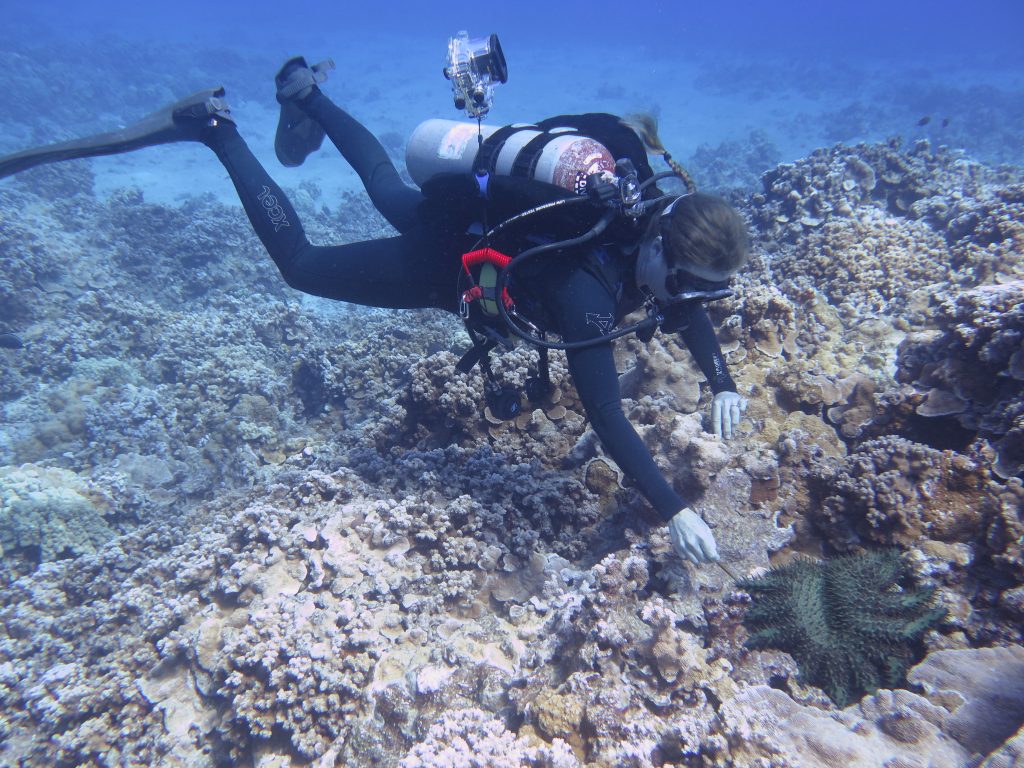
Dr. Jennifer Smith investigates a particularly large crown of thorns starfish inside Molokini crater.
During our dry day, we were able to visit the Maui Ocean Center to check out the exhibit featuring Kaho‘olawe. The history of Kaho‘olawe is one of tragedy and rebirth: once home to a community of native Hawaiians and a unique ecosystem, the island was ravaged by decades of war, the arrival of European settlers, and munitions testing by the US military. There is now an effort to restore native vegetation to prevent erosion and protect the nearshore reef ecosystems on the island. We were fortunate enough to survey reef sites at Kaho‘olawe in 2017, 2019, and 2021, and several 3D reef models from those expeditions were on display in the exhibit! It was rewarding to see our efforts utilized in an exhibit about environmental restoration and cultural heritage.
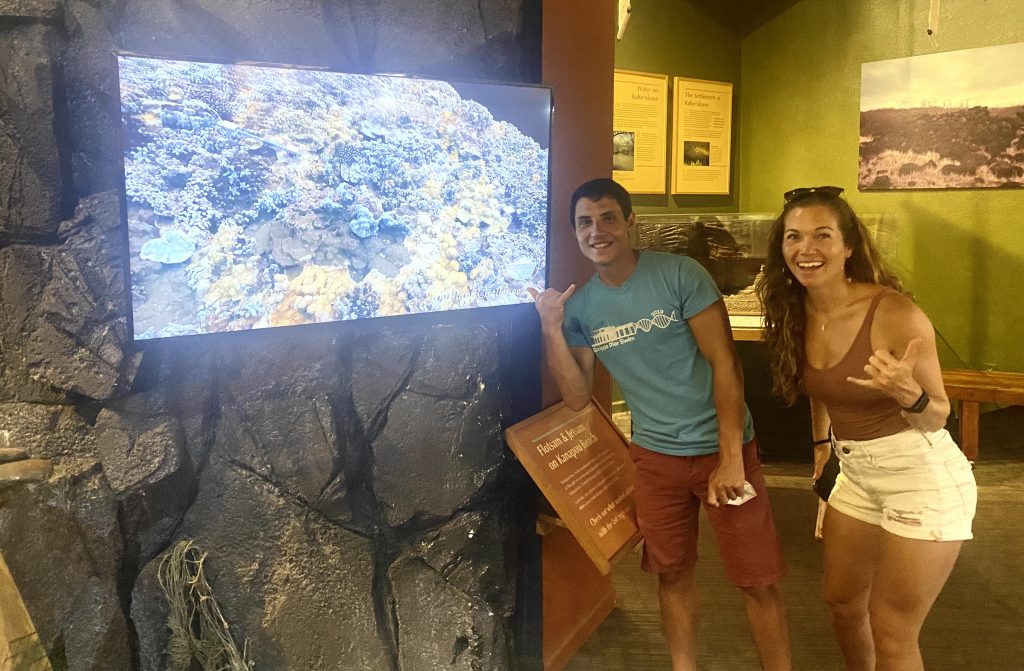
Smith Lab PhD candidate Orion McCarthy and Smith Lab manager Sam Clements pose next to a 3D model from Kaho‘olawe at Maui Ocean Center.

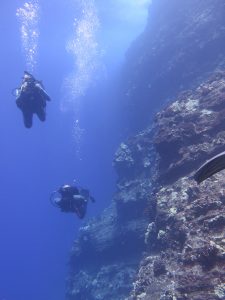
We were treated to a few surprises during our field work, including a rare opportunity to dive along the exposed exterior of Molokini crater. The edge of the crater is a sheer cliff that continues from above the surface down hundreds of meters into the abyss below. With 100+ foot visibility, we felt like birds flying through an underwater analogue of the Grand Canyon. As we drifted along the edge of the drop-off, we checked out various species of fish, corals, sponges and echinoderms. It was amazing how different the reef was inside and outside the crater, despite being located mere hundreds of meters apart. That observation serves as a reminder how important oceanographic conditions are in terms of shaping the structure of coral reefs and other marine ecosystems. The reefs inside Molokini crater (left) and along Molokini’s outer edge (right) could not have been more different, despite being so close together.
Our other lucky surprise came during our last day of field work. As we retrieved the BEAMS sensor from Kahekili, a pod of spinner dolphins swam by. Dozens upon dozens of curious cetaceans streamed by like the flow of cars on a busy street during rush hour, turning a routine sensor retrieval into a once-in-a-lifetime dive. In this line of work, any dive has the potential to become a special memory. I will hold onto those special memories from this trip, and can’t wait to return next year!

